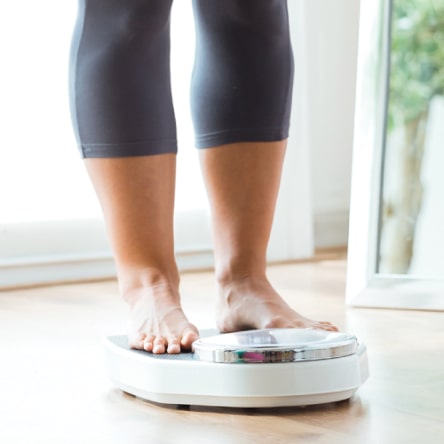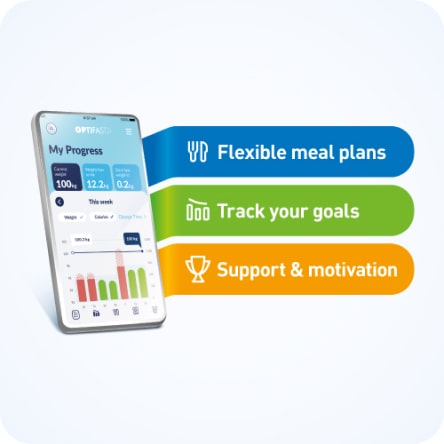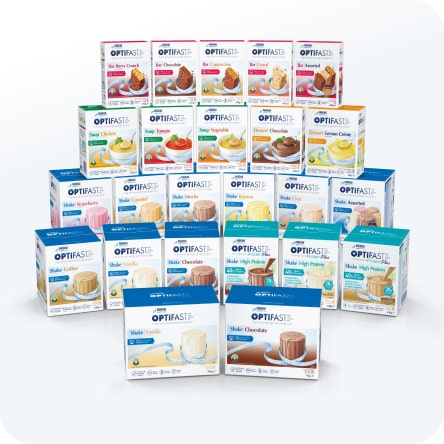
The OPTIFAST difference
The OPTIFAST Program is a clinically proven, scientifically designed very low calorie diet (VLCD) program recommended for the dietary management of obesity.
Continue readingVLCD stands for
Very Low Calorie Diet
A VLCD is a diet that provides 800 calories or less per day, whilst consisting of sufficient protein, fatty acids, carbohydrates, vitamins and minerals for safe and fast weight loss. It can be undertaken safely with medical supervision and using specially formulated total diet replacement products to ensure nutritionally adequacy.
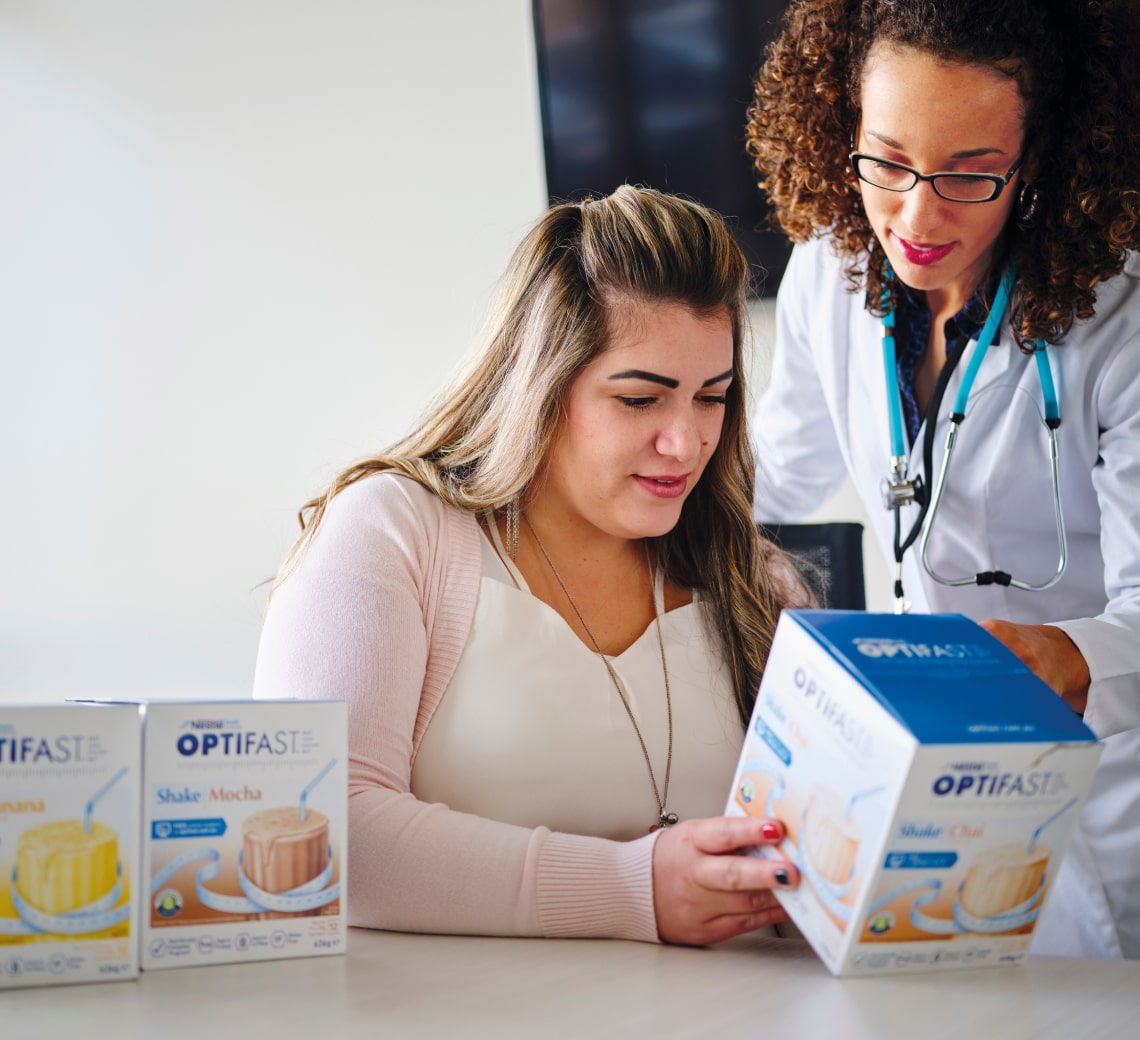
The OPTIFAST VLCD Program can help you achieve fast and effective weight loss with a flexible 3,2,1 step program
Weight loss has been shown to help improve health outcomes:
- Improve blood glucose control1
- Improve blood pressure control2
- Improve quality of life1
- Reduce blood cholesterol2
- Reduce the pain associated with osteoarthritis3

Expected rate of weight loss
Research using Very low calorie diets (also known as VLEDs or Very Low Energy Diets) have shown on average, weekly weight losses of approximately 1.0-2.5kg per week4, providing greater initial weight loss than other forms of calorie restriction.
Reducing energy (calorie) intake to less than 800 calories as well as reducing carbohydrate intake leads to a whole body shift towards fat stores being utilised as the major source of energy through a process called ketosis. This results in consistent and successful weight loss5.
Weight loss and KetosisOur program levels are designed to help people achieve the health benefits of weight loss and adopt healthier eating habits.
Key features of the OPTIFAST Program include:
- Flexible program levels, giving you the ability to choose the right weight loss plan for you
- A wide range of specially formulated products
- Free Support App
- Peer support through our private OPTIFAST Facebook community
- Medical support from OPTIFAST Accredited Healthcare Professionals
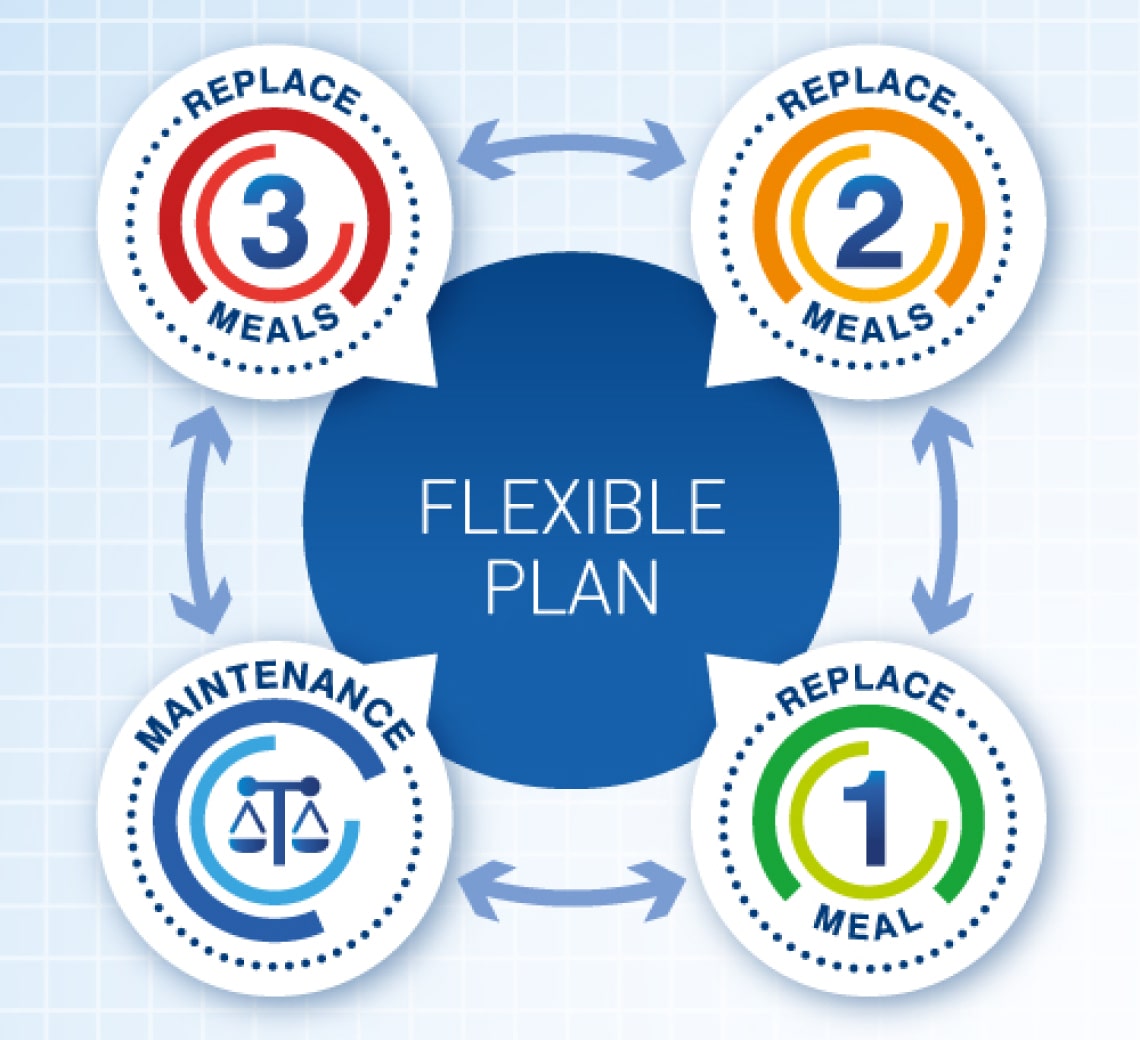
It is important to discuss any dietary change with your healthcare professional before commencing. However, there are specific groups that the OPTIFAST Program Intensive Level is not suitable for.

Who may benefit from the OPTIFAST Program?
- People with a body mass index (BMI) greater than 30, or 27 and above with medical conditions such as type 2 diabetes or high blood pressure
- For men, if your waist circumference is above 102cm or as a woman, your waist circumference is above 88cm
- Those requiring a very low energy diet prior to bariatric surgery
Who is the OPTIFAST Program not suitable for?
- Normal weight (BMI < 25kg m²)
- Age >65 years
- Pregnancy or breast feeding
- Children under 18 years of age
- Presence of Porphyria
- Recent myocardial infarction (heart attack) or unstable angina (chest pain)
- Renal or Liver disease
We recommend that the OPTIFAST Program be taken under the supervision of a healthcare professional such as an Accredited Practising Dietitian, Pharmacist, Doctor, or other healthcare specialist.
Find an OPTIFAST VLCD Accredited Healthcare Professional
Do any precautions need to be taken?
Precautions may need to be taken when using the OPTIFAST Program Intensive Level if you have any of the following:
- History of severe psychological disturbance, alcoholism or drug abuse
- Cholelithiasis or past history of gall stones
- Pancreatitis or Gout
- Fertility issues
It is essential that you seek the advice of a qualified healthcare professional who can help manage and advise you on which level of the OPTIFAST VLCD Program is right for you.
What will the program cost me?
On average, each of our products are around AU$3.75 - $5.75 RRP per meal. This may be cheaper than what you would pay for your normal weekly food requirements or for a calorie-controlled meal.
Dependent on the Level you are on, the only additional food you may need to purchase on top of your OPTIFAST VLCD products is your fresh and healthy low starch vegetables.
Get startedReferences:
- Lean M.E.J., et al. Lancet 2018; 391: 541-51
- Anderson, J.W., et al. J American College of Nutrition, 2003. 22(5): p.331-339
- Reicke, B.F.., et al. Osteoarthritis Cartilage, 2010. 18(6):p. 746-54
- Delbridge, E and Proitetto, J. The State of the science: VLED (Very Low Energy Diet) for obesity. Asia Pac J Clin Nutr. 2006;15 Suppl:49-54.
- Mustajoki, P and Pekkarinen, T. Very low energy diets in the treatment of oebsity. Obes Rev. 2001 Feb;2(1):61-70
